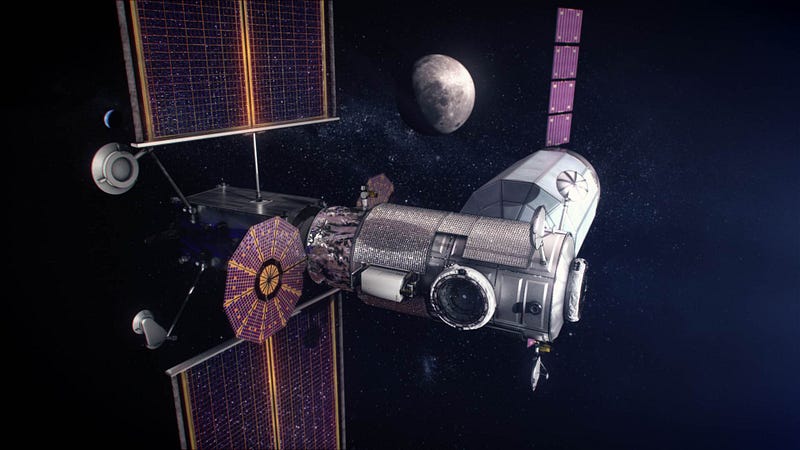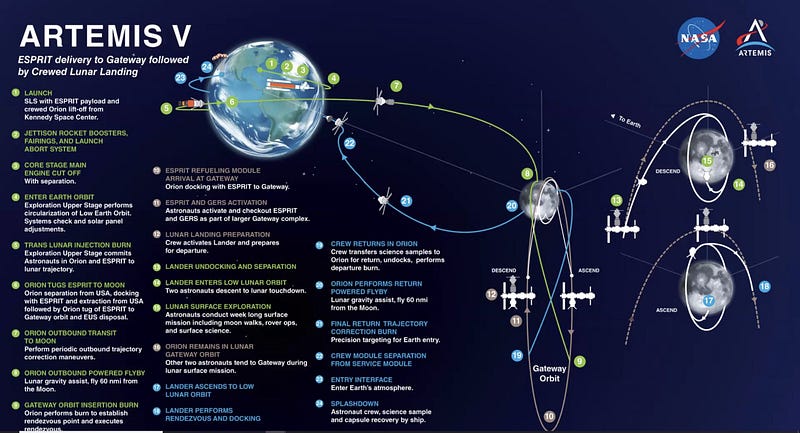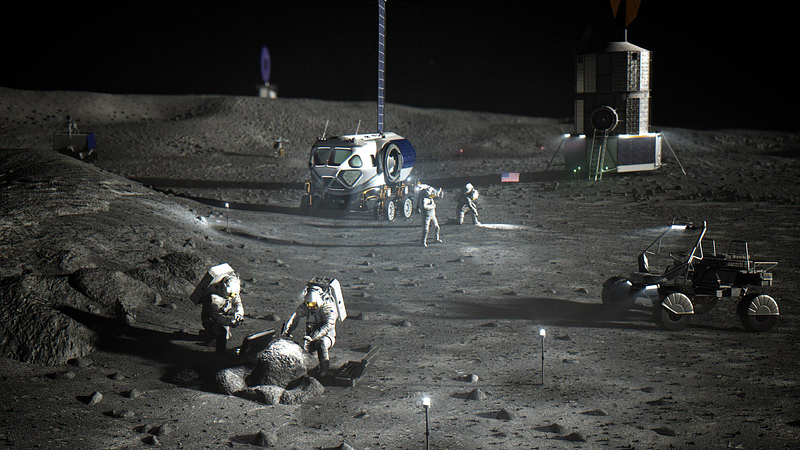NASA's Artemis Program: Paving the Way for Lunar Exploration
Written on
Introduction to Artemis
After a hiatus of 50 years, NASA is making its return to the moon. With the Artemis program, launched in 2017, the agency aims to establish a permanent human presence in lunar orbit, building on the legacy of the Apollo missions. The goal is to send astronauts back to the moon by 2024 and lay the groundwork for sustainable habitation by the end of the decade.

Understanding the Artemis Initiative
The Artemis program represents a new vision for NASA, which has not independently ventured into space for over a decade. Its long-term objectives include facilitating future Mars missions and unlocking new avenues for scientific exploration. Central to this initiative is the development of the Lunar Gateway—a compact space station designed to orbit the moon, offering astronauts living quarters and laboratories for research purposes. This facility is expected to serve as a crucial hub, allowing astronauts to reside and work in lunar orbit prior to descending to the moon's surface.
Additionally, the Artemis program will utilize NASA’s newest rocket, the Space Launch System (SLS), alongside the Orion spacecraft for its missions. The SLS is the most powerful rocket ever constructed by NASA, engineered to propel astronauts deeper into space than any previous vehicle. Orion, a cutting-edge spacecraft, can sustain human life for up to 21 days and will transport astronauts between Earth and the Lunar Gateway.
The Human Landing System (HLS) will be responsible for ferrying astronauts to and from the lunar surface. Initially, Blue Origin was contracted to develop the SLS, and it will serve as the primary support for moon missions.
The Artemis Base Camp will be established to facilitate lunar operations. This camp will begin with a lunar cabin and a rover and will eventually evolve to support crews for extended missions lasting up to two months. Construction is set to commence when astronauts land on the moon's South Pole during the future Artemis III mission.
Artemis is also focused on "lunar sustainability," which aims to create a permanent human presence by utilizing lunar resources, particularly water ice located at the moon's South Pole. NASA’s Volatiles Investigating Polar Exploration Rover (VIPER) mission will conduct a thorough examination of these resources.
As a stepping stone to Mars, Artemis will leverage the experiences and technologies developed during its missions to prepare for human expeditions to the Red Planet. Notably, the program emphasizes collaboration with international and commercial partners, moving away from reliance on Russian space transportation amid rising geopolitical tensions.
Mission Timeline
The Artemis initiative outlines three primary missions to establish the necessary systems for lunar exploration, including the Lunar Gateway, the Artemis Base Camp, and the transport mechanisms connecting them. These missions will function as a cohesive, self-sustaining system.
The key components of this system include an Earth-based launch site and command center, the Lunar Gateway in orbit, and the Artemis Base Camp. Transport vehicles will facilitate the movement between these components: the Orion spacecraft will connect Earth and the Lunar Gateway with assistance from the SLS, while the HLS will connect the Gateway to the Base Camp.
The program's full deployment is scheduled to occur over six years, culminating in five missions and additional support missions through 2029.
Phase 1 encompasses the initial missions aimed at testing the SLS, Orion, and HLS in preparation for the first lunar landing. Artemis I launched on November 16, 2022, successfully orbited the moon for several weeks before returning to Earth on December 11. This mission was unmanned, utilizing mannequins to simulate launch forces.

Artemis II is expected to launch in November 2024, replicating Artemis I's flight path but with a crew onboard. Following that, a supplemental mission will deploy the first module of the Lunar Gateway in collaboration with Canadian, Japanese, and European space agencies.
Artemis III, currently slated for 2025, will depend on the successful completion of the earlier missions. This mission will utilize SpaceX's HLS to transport astronauts directly from Orion to the lunar surface. Subsequent missions will focus on constructing the Lunar Gateway.
If all goes well, Phase 2 will commence, bringing the Lunar Gateway into full operation. Artemis IV is targeted for September 2028, focusing on the Gateway's final assembly and the second moon landing via the HLS. Artemis V is scheduled for September 2029, aimed at delivering additional Gateway modules and testing a new lunar landing vehicle, the Blue Moon, which will enable longer crewed stays on the moon.

While there are no specific plans for missions beyond 2029, the significant investment in Artemis suggests that lunar travel will become routine. NASA's ultimate goal is to establish a permanent operational base on the moon, alongside the Lunar Gateway.
The Future of Space Exploration
Establishing a lasting presence on the Moon will open doors for extensive research and resource utilization, setting the groundwork for human colonization of other planets. NASA views this initiative as a vital proof-of-concept for the more ambitious goal of establishing human habitats on Mars.
Despite some criticism regarding the complexity of the project, which includes claims of unnecessary redundancy, the Artemis program looks beyond merely returning humans to the moon and reestablishing American presence in space. The steps outlined are designed to prepare for future space exploration.
With advancing technology, it's unlikely that humanity will remain Earth-bound indefinitely. The pursuit of new worlds is not just a longing; it is essential for our long-term survival. As we embark on this journey, our future missions are clearly defined.

The next logical step is to settle another planet, with Mars being the primary target. However, before undertaking that challenge, establishing a presence on the Moon is crucial. The series of lunar missions will serve as experiments to test the strategies required for the larger challenge of settling Mars, which involves multi-year missions with limited contact and resupply from Earth.
Ultimately, Mars may serve as a stepping stone for more ambitious missions further into the solar system and beyond. This monumental task may seem daunting when viewed from a distance, but we must remain focused on these initial test missions to build the capabilities necessary for future endeavors.
The Artemis program signifies a groundbreaking advancement in space exploration. With its bold objectives and the promise of a sustainable lunar presence, Artemis is ushering in a new era of human activity beyond Earth's confines, positioning humanity on the brink of becoming an interplanetary species.
The era of America being excluded from space exploration is over. It’s time to reclaim our leadership in this vital domain.
Here is an overview of the Apollo to Artemis initiative, showcasing NASA's renewed commitment to lunar exploration and the future of space travel.
This video discusses the challenges faced in returning to the moon and the significance of overcoming these obstacles for future space missions.